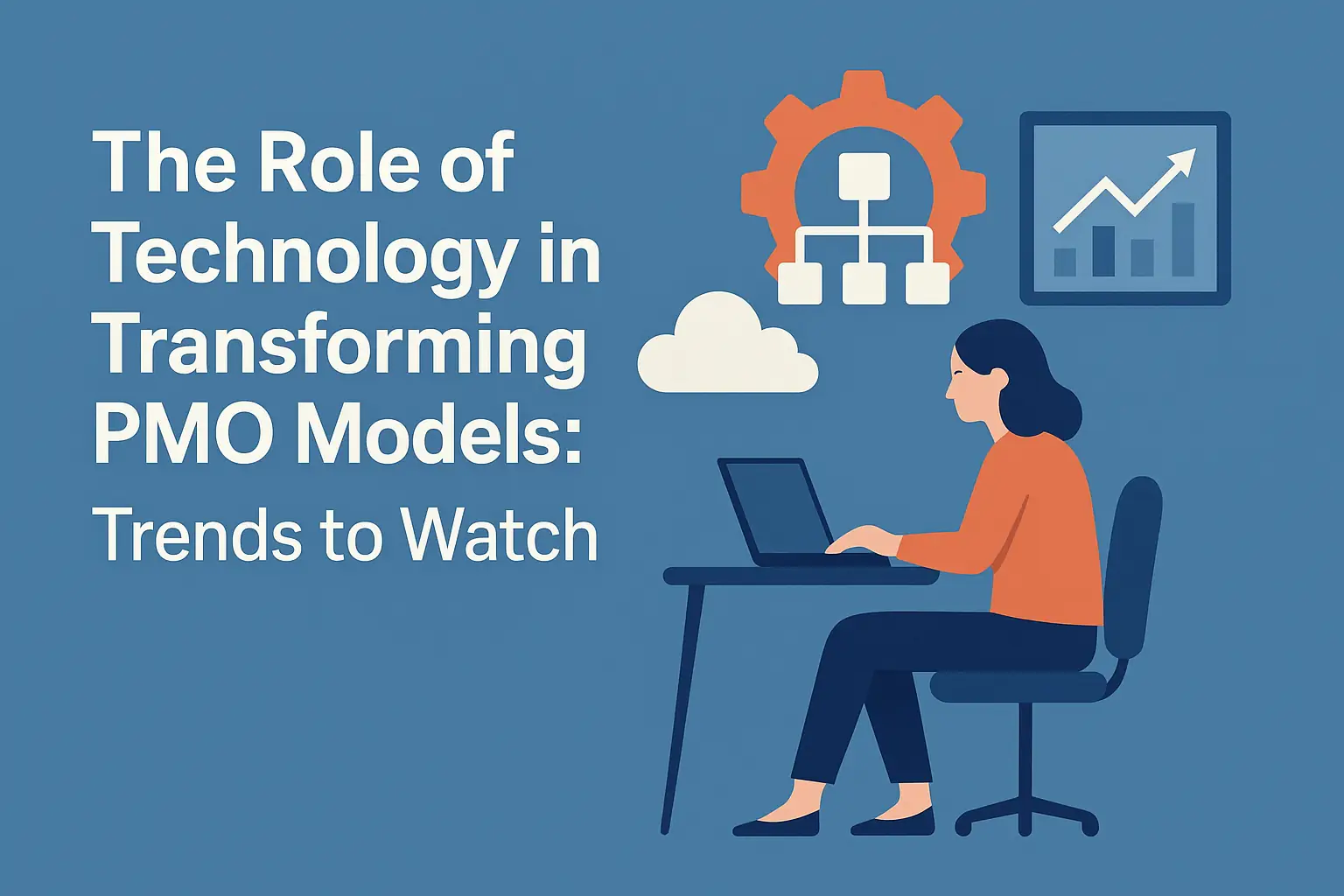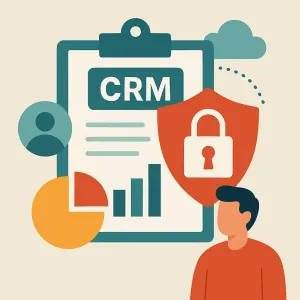Introduction
The Project Management Office (PMO) serves as a pivotal entity that ensures projects are executed efficiently and effectively. PMO models are structured frameworks that define how project management is organized within an organization. They play a crucial role in aligning project objectives with business goals, providing governance, and facilitating resource management. The significance of PMO models lies in their ability to standardize processes, enhance communication, and improve project outcomes, ultimately driving organizational success.
As we navigate through an increasingly digital landscape, the role of technology in transforming PMO practices cannot be overstated. Digital tools and platforms are reshaping how PMOs operate, enabling them to automate repetitive tasks, enhance collaboration, and provide real-time insights into project performance. Automation features in software tools allow project managers to focus on strategic activities rather than getting bogged down by administrative duties, thereby increasing overall productivity and effectiveness [4]. Furthermore, the integration of advanced technologies such as artificial intelligence (AI) is becoming indispensable for PMOs, as it aids in decision-making, resource allocation, and risk management [2][6].
This introduction sets the stage for a deeper exploration of current trends and future possibilities in PMO models. As organizations continue to embrace digital transformation, understanding how these changes impact PMO structures and practices will be essential for IT managers and PMO leaders. The evolution of PMO models, driven by technological advancements, presents both challenges and opportunities that can redefine project management as we know it. By examining these trends, we can better prepare for the future of project management and the role of PMOs within it.
Understanding PMO Models
The Project Management Office (PMO) plays a crucial role in ensuring that projects align with organizational goals and are executed efficiently. As technology continues to evolve, so too do the models of PMOs, which can significantly influence project outcomes. Below, we explore various PMO models, their functions, and the traditional challenges they face.
Overview of Various PMO Models
- Supportive PMO: This model provides a consultative role, offering support and guidance to project teams without exerting direct control. It encourages creativity and growth within the organization, making it ideal for environments that value innovation and flexibility [2][3].
- Controlling PMO: The controlling PMO enforces compliance with project management standards and methodologies. It monitors project performance and ensures that teams adhere to established processes, which can lead to improved consistency and quality in project delivery [3][10].
- Directive PMO: This model takes a more hands-on approach by directly managing projects. The directive PMO is often seen as a command center, providing strong oversight and control over project execution. This can be beneficial in complex projects where close management is necessary to achieve desired outcomes [3][15].
- Delivery PMO: Focused on the tactical aspects of project management, the delivery PMO concentrates on planning and monitoring project activities. It is particularly effective in environments where project execution is paramount, ensuring that projects are delivered on time and within budget [9][11].
Influence of PMO Models on Project Management Outcomes
Each PMO model has a distinct influence on project management outcomes:
- Supportive PMOs foster a collaborative environment, which can lead to higher team morale and innovative solutions. However, they may struggle with accountability if teams do not adhere to best practices [2][12].
- Controlling PMOs can enhance project consistency and quality by enforcing standards, but they may also create resistance among teams that feel micromanaged [3][12].
- Directive PMOs provide clear direction and accountability, which can be crucial for high-stakes projects. However, this model may stifle creativity and flexibility, leading to potential burnout among team members [3][15].
- Delivery PMOs ensure that projects are executed efficiently, but they may lack the strategic oversight needed to align projects with broader organizational goals [9][12].
Traditional Challenges Faced by PMOs
Despite their importance, PMOs often encounter several traditional challenges:
- Resistance to Change: Teams may resist the implementation of new processes or tools introduced by the PMO, particularly if they perceive them as burdensome or unnecessary [12].
- Lack of Executive Support: PMOs require buy-in from senior management to be effective. Without this support, they may struggle to enforce standards or secure necessary resources [12][13].
- Resource Constraints: Many PMOs operate with limited resources, which can hinder their ability to provide adequate support and oversight across multiple projects [12][14].
- Alignment with Organizational Goals: Ensuring that all projects align with the strategic objectives of the organization can be challenging, particularly in larger organizations with diverse project portfolios [12][14].
The Digital Transformation of PMOs
In the rapidly evolving landscape of project management, the role of Project Management Offices (PMOs) is undergoing a significant transformation driven by digital tools and platforms. This shift is not only enhancing operational efficiency but also redefining the strategic approach of PMOs. Here are some key insights into how technology is reshaping PMO models.
Key Digital Tools and Platforms in PMOs
Several digital tools have emerged as essential components in modern PMOs, facilitating improved project management practices. Notable among these are:
- Cloud-based Project Management Platforms: Tools like Microsoft Project and Asana provide centralized environments for managing tasks, timelines, and resources, allowing teams to collaborate effectively regardless of their physical location [6][11].
- Collaborative Platforms: Applications such as Slack and Microsoft Teams enhance communication among team members, enabling real-time discussions and file sharing, which is crucial for maintaining project momentum [9].
- Advanced Analytics Tools: These tools offer PMOs the ability to monitor project performance through data-driven insights, improving decision-making and resource allocation [9].
Enhancing Collaboration, Communication, and Reporting
The integration of these digital tools significantly enhances various aspects of PMO operations:
- Collaboration: Digital platforms facilitate seamless teamwork, especially in remote and hybrid work environments. They allow for real-time updates and feedback, which are vital for maintaining alignment across dispersed teams [4][5].
- Communication: Enhanced communication tools break down silos within organizations, ensuring that all stakeholders are informed and engaged throughout the project lifecycle. This leads to fewer misunderstandings and a more cohesive project approach [5][9].
- Reporting: Digital tools streamline reporting processes by providing dashboards and real-time data visualization. This allows PMOs to present project status updates and performance metrics more effectively to stakeholders, fostering transparency and accountability [15].
Shift to Agile and Adaptive Methodologies
The digital transformation of PMOs is also marked by a significant shift from traditional project management methodologies to more agile and adaptive approaches. This evolution is characterized by:
- Flexibility: Digital tools enable PMOs to respond quickly to changes in project scope or market conditions, allowing for iterative planning and execution [3][10].
- Focus on Value Delivery: The emphasis has shifted from merely completing projects on time and within budget to delivering value and meeting stakeholder needs. This requires PMOs to adopt a more customer-centric approach [2][3].
- Integration of New and Legacy Systems: As PMOs embrace digital transformation, they face the challenge of integrating new tools with existing systems. This integration is crucial for leveraging the full potential of digital capabilities while maintaining operational continuity [8][9].
Trends in Technology Reshaping PMOs
The landscape of Project Management Offices (PMOs) is undergoing a significant transformation, driven by advancements in technology. As IT managers and PMO leaders navigate this evolving environment, several key trends are emerging that highlight the role of digital tools and platforms in reshaping PMO models.
1. Rise of Cloud-Based Project Management Software
Cloud-based project management software is becoming increasingly prevalent, offering flexibility and accessibility that traditional systems cannot match. This shift allows teams to collaborate in real-time, regardless of their physical location. The benefits include:
- Enhanced Collaboration: Teams can work together seamlessly, sharing updates and documents instantly, which fosters a more agile project environment [10].
- Scalability: Organizations can easily scale their project management capabilities as needed, accommodating growth without the need for significant infrastructure investment [11].
- Cost Efficiency: Cloud solutions often reduce the need for extensive IT support and maintenance, allowing PMOs to allocate resources more effectively [10].
2. Impact of AI and Machine Learning on Decision-Making
Artificial Intelligence (AI) and machine learning are revolutionizing how PMOs approach decision-making. These technologies enable more informed and timely decisions through:
- Predictive Analytics: AI can analyze historical project data to forecast potential risks and outcomes, allowing PMOs to proactively address issues before they escalate [6].
- Resource Optimization: Machine learning algorithms can identify the most effective allocation of resources, ensuring that projects are staffed and funded appropriately [4].
- Automated Reporting: AI tools can automate the generation of reports, providing real-time insights into project performance and freeing up PMO leaders to focus on strategic initiatives [3].
3. Role of Data Analytics in Project Performance Monitoring
Data analytics is becoming a cornerstone of effective project performance monitoring and reporting. By leveraging advanced analytics, PMOs can:
- Enhance Visibility: Data analytics tools provide comprehensive dashboards that offer insights into project health, timelines, and resource utilization, enabling PMOs to make data-driven decisions [9].
- Improve Accountability: With clear metrics and KPIs, teams can track progress and hold individuals accountable for their contributions, fostering a culture of transparency [8].
- Facilitate Continuous Improvement: By analyzing project outcomes and performance data, PMOs can identify areas for improvement and implement best practices in future projects [5].
Challenges and Considerations
As Project Management Offices (PMOs) increasingly integrate digital tools and platforms into their operations, they encounter a variety of challenges that can hinder successful adoption. Understanding these obstacles is crucial for IT managers and PMO leaders aiming to leverage technology effectively. Here are some key challenges and considerations:
- Resistance to Change: One of the most significant barriers to adopting new technologies is the reluctance of team members to change established processes. Employees may be comfortable with existing workflows and hesitant to embrace new digital tools, fearing that these changes could disrupt their routines or lead to increased workloads. This resistance can be mitigated through effective change management strategies, including clear communication about the benefits of new technologies and involving team members in the transition process [2][3].
- Training Needs: The integration of advanced digital tools often necessitates upskilling employees to ensure they can utilize these technologies effectively. PMOs may face challenges in providing adequate training and support, particularly if there are budget constraints or time limitations. To address this, PMOs should consider starting small by implementing AI in specific areas where it can deliver immediate value, such as automating reporting processes, before scaling up [1][3].
- Aligning Technology with Organizational Culture: For technology to be successfully integrated into PMOs, it must align with the organization’s culture and values. If the digital tools do not resonate with the existing work environment or if they clash with the organization’s goals, adoption rates may suffer. PMOs should assess their organizational culture and ensure that the selected technologies support and enhance it, rather than impose a conflicting framework [4][10].
- Ongoing Evaluation and Adaptation: The rapid pace of technological advancement means that PMOs must continuously evaluate and adapt their technology strategies. This involves not only assessing the effectiveness of current tools but also staying informed about emerging technologies that could further enhance project management practices. Regular feedback loops and performance metrics can help PMOs identify areas for improvement and ensure that their technology strategies remain relevant and effective [5][12].
Case Studies: Successful PMO Transformations
The integration of technology into Project Management Offices (PMOs) has become a pivotal factor in enhancing efficiency, accuracy, and overall project success. Below are notable case studies that illustrate how digital tools and platforms have reshaped PMOs, along with the measurable outcomes and lessons learned from these transformations.
1. Microsoft’s PMO Transformation
Microsoft’s PMO implemented a strategic alignment approach that focused on structured project execution. By leveraging digital tools, they were able to enhance communication and collaboration among project teams.
- Measurable Outcomes: The transformation led to improved project delivery times and increased stakeholder satisfaction. Microsoft reported a significant reduction in project overruns and enhanced resource allocation efficiency.
- Lessons Learned: Establishing clear project management processes and providing comprehensive training for project managers were crucial. The importance of continuous feedback loops was also emphasized to adapt and refine project strategies effectively [9].
2. PUB’s Digital Integration
The Public Utilities Board (PUB) of Singapore embraced digital transformation to manage its water resources more effectively. They integrated predictive analytics tools to optimize supply chain management.
- Measurable Outcomes: This integration resulted in a continuous and safe water supply, even amidst growing demand. The use of digital tools allowed for real-time monitoring and proactive management of resources, leading to a 20% reduction in operational costs.
- Lessons Learned: The case highlighted the necessity of aligning technology with organizational goals. Engaging stakeholders early in the process ensured that the digital tools met the actual needs of the PMO and the organization as a whole [11].
3. A Global Manufacturing Firm’s PMO Overhaul
A global manufacturing company transitioned from manual project tracking to an automated, data-driven PMO framework. This shift involved implementing specialized project management software that streamlined processes.
- Measurable Outcomes: The company experienced a 30% increase in project completion rates and a 25% decrease in project costs due to improved resource management and reduced administrative overhead.
- Lessons Learned: The importance of change management was underscored, as employees needed support and training to adapt to the new tools. Additionally, fostering a culture of data-driven decision-making was essential for maximizing the benefits of the new PMO model [1][6].
4. A Financial Services Firm’s Digital PMO
A financial services firm adopted a digital PMO model that utilized cloud-based project management tools to enhance collaboration across geographically dispersed teams.
- Measurable Outcomes: The firm reported a 40% improvement in project visibility and a 50% reduction in time spent on project reporting. This transformation enabled quicker decision-making and enhanced responsiveness to market changes.
- Lessons Learned: The case emphasized the need for robust cybersecurity measures when adopting cloud solutions. Furthermore, ensuring that all team members were trained on the new tools was critical to achieving full adoption and realizing the benefits of the digital PMO [3][5].
The Future of PMO Models in a Digital Age
As we navigate through an era defined by rapid technological advancements, the Project Management Office (PMO) is undergoing a significant transformation. The integration of digital tools and platforms is reshaping how PMOs operate, making them more agile, efficient, and strategic. Here are some key trends and predictions regarding the future evolution of PMO models influenced by technology.
Emerging Technologies Impacting PMO Operations
- Artificial Intelligence (AI) and Automation: AI is set to revolutionize project management by automating routine tasks, providing predictive insights, and enhancing decision-making processes. This will allow PMOs to focus on strategic initiatives rather than administrative functions, thereby increasing overall efficiency [8][10].
- Blockchain Technology: The adoption of blockchain can enhance transparency and security in project management. By providing a decentralized ledger, blockchain can facilitate better tracking of project milestones and resource allocation, which is crucial for maintaining accountability in complex projects [8].
- Internet of Things (IoT): IoT devices can provide real-time data and insights, enabling PMOs to monitor project progress and resource usage more effectively. This connectivity can lead to improved collaboration among teams and stakeholders, fostering a more integrated approach to project management [8].
- Data Analytics: The importance of data-driven decision-making is becoming increasingly evident. PMOs that leverage data analytics can gain valuable insights into project performance, resource utilization, and risk management, allowing for more informed strategic planning [10][12].
Predictions for PMO Evolution
- Shift to Agile and Flexible Models: As organizations embrace agile methodologies, PMOs will need to adopt more flexible and responsive models. This shift will require PMOs to become service-oriented, focusing on supporting teams rather than merely overseeing projects [3][11].
- Strategic Leadership Role: The PMO is evolving from an administrative function to a strategic powerhouse. Future PMOs will be expected to play a critical role in aligning projects with organizational goals, driving innovation, and fostering a culture of collaboration [4][10].
- Integration of Hybrid Work Models: With the rise of remote and hybrid work environments, PMOs will need to adapt their processes and tools to support distributed teams. This may involve leveraging virtual collaboration platforms and integrated project management tools to ensure seamless communication and project execution [13][14].
Encouraging Proactivity and Adaptability
In this rapidly changing environment, it is essential for PMO leaders to remain proactive and adaptable. Embracing emerging technologies and fostering a culture of continuous improvement will be key to navigating the complexities of future projects. By staying informed about industry trends and investing in the right tools, PMOs can position themselves as vital contributors to organizational success.
In conclusion, the future of PMO models in a digital age is bright, but it requires a commitment to innovation and adaptability. By leveraging technology and embracing new methodologies, PMOs can transform their operations and deliver greater value to their organizations.
Conclusion
In today’s rapidly evolving project management landscape, the transformative role of technology in reshaping PMO models cannot be overstated. Digital tools and platforms have revolutionized how PMOs operate, enabling them to leverage real-time data and analytics for improved decision-making and project efficiency. By digitizing information and making it accessible across devices, PMOs can enhance collaboration and transparency among stakeholders, ultimately driving successful project outcomes [1][6].
As IT Managers and PMO Leaders, it is crucial to embrace these digital tools to stay competitive and responsive to the changing demands of the business environment. The integration of technology not only streamlines processes but also supports better selection and prioritization of projects, leading to faster project definition and planning [5][7]. By adopting these innovations, PMOs can bridge the gap between technology and business strategy, positioning themselves as vital change managers within their organizations [2][8].
Moreover, the journey towards digital transformation is ongoing. Continuous learning and adaptation are essential for PMO leaders to effectively navigate the complexities of project management in the digital age. Engaging with emerging technologies and staying informed about industry trends will empower PMOs to enhance their capabilities and deliver greater value to their organizations [9][10].
Find out more about Shaun Stoltz https://www.shaunstoltz.com/about/.
This post was written by an AI and reviewed/edited by a human.



